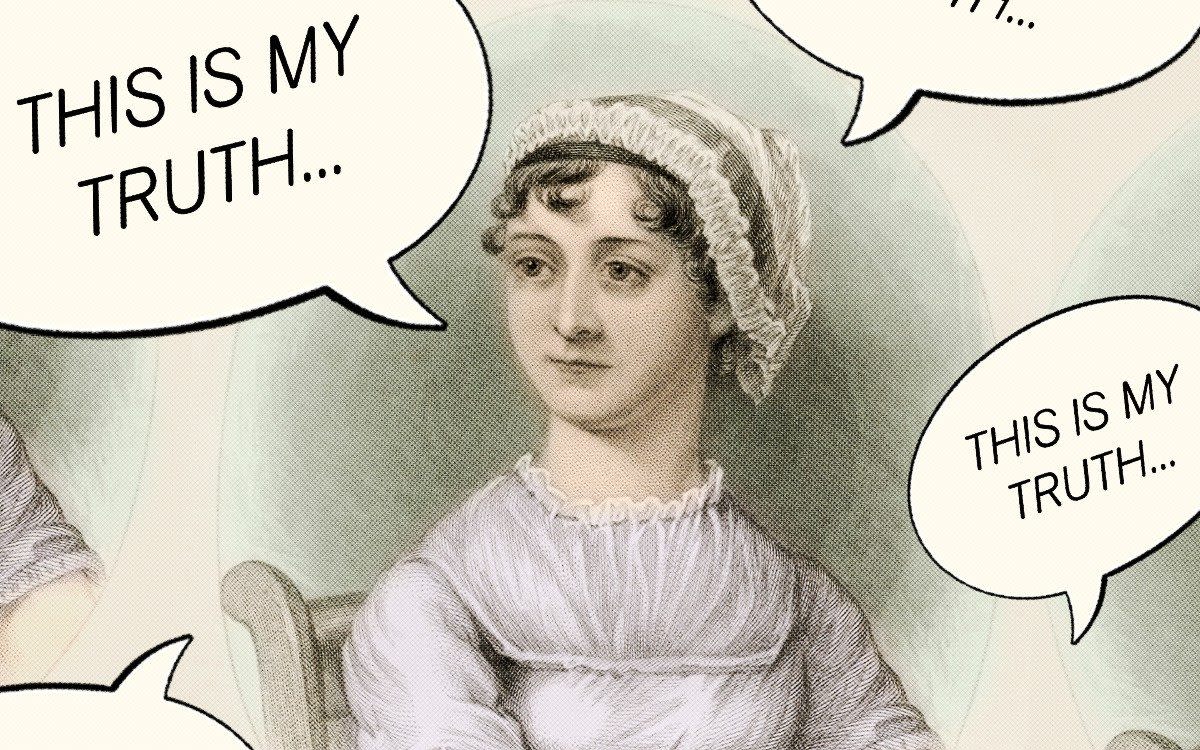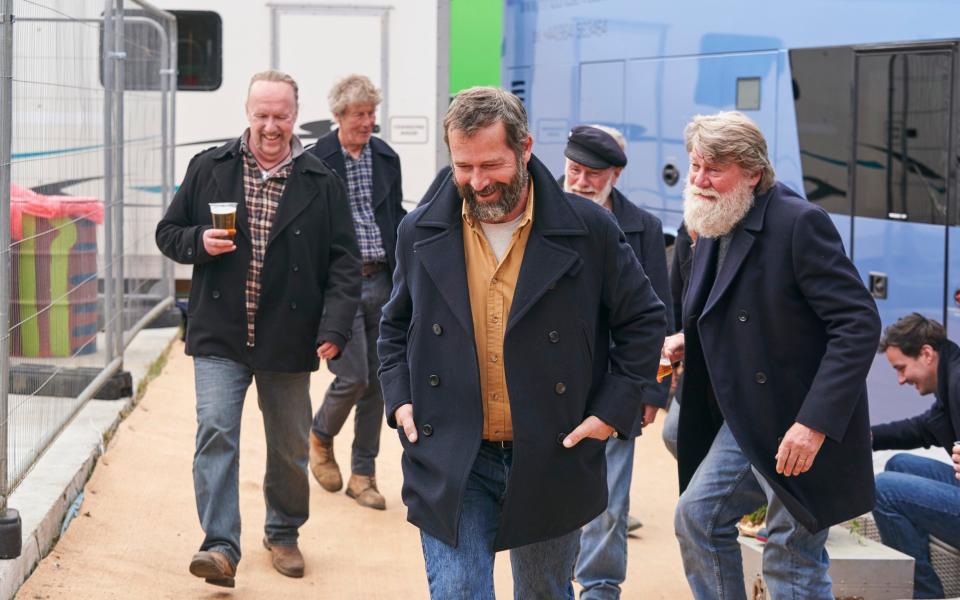Netflix's Persuasion adaptation sums up the psychobabble ruining culture

- Oops!Something went wrong.Please try again later.
In the new Netflix adaptation of Jane Austen’s Persuasion, the heroine Anne Elliot wears her heart on her sleeve. “It’s okay to find love on your terms, however unorthodox,” says Anne, “Don’t let anyone tell you how to live. Or who to love” – for all the world as if she had sprung not from the imagination of Austen but the self-help section of Amazon.
This kind of therapy-speak abounds in the new adaptation, so much so that we can tell we are in for a learning experience in which Anne’s identity has a holding space to express itself fully as long as we are actively listening. Austen, by contrast, often used silence to convey deep emotion: Anne does not speak until chapter three of the novel, and spends much of it listening to others. One critic noted that Austen often employs a pause “when a character is suppressing a laugh, or an angry reply: it stands for a rebellion that does not take place, or takes place only internally”. Marianne Dashwood’s stifled scream in Sense and Sensibility may be the loudest in all of literature; it reverberates down the centuries.
In the same year that Austen died, the poet John Keats used the phrase “negative capability”, meaning the ability of writers to perceive truths beyond the realm of logic. For the next 200 years, this informed the greatest works in fiction which beautifully underplayed how someone really felt. The love affair between Charles and Sebastian in Brideshead Revisited is dealt with in one fleeting remark about their first summer term at Oxford, “its naughtiness high in the catalogue of grave sins”. In Sons and Lovers, when miner Walter Morel realises, without being told, that one of his sons is dead, the sudden weight of his grief is captured by D H Lawrence through an image not even seen by Walter’s surviving son: “Paul saw everything, except his father leaning against the truck as if he were tired.”
Yet today, nuance is being drained from our culture, not simply by those who want to leave us in no doubt of what their work means and what we should all learn from it, lest, heaven forbid, we interpret it ourselves, but from the ever-growing influence of the therapy mindset – that mystery-free realm of “speaking my truth” and “doing the work”.
This innovation alone would erase most of the great works of European cinema, in which a glance or a twitch of the mouth can convey everything, taking the films of Michelangelo Antonioni and Robert Bresson, Claire Denis and Michael Haneke with it. Surprise, surprise, they’re not often found on Netflix.

Therapy has certainly done a lot of good for a lot of people, but it is ruining the arts. In mainstream cinema, we are now seeing a tendency to overshare in the most trite ways: in Fisherman’s Friends: One and All we hear Jim, played by James Purefoy, talk about his mental health struggles in solemn soundbites via a radio interview. “It’s OK not to be OK,” he says.
In therapy culture, nothing can be left internalised, silence is a space that must be filled, everything must be vocalised, made surface, as though the ocean of the subconscious should be drained and its hidden depths revealed. The guiding logic of today’s literary fiction is to leave no emotional stone unturned, and with the emphasis now on “lived experience” threatening the writerly imagination, novels have become a form of soul-baring. The author Matt Haig has understood this trend so fully that a hugely popular novel such as The Midnight Library, in which the main character is able to revisit all of her life choices in a library that contains their alternative paths, crosses the border from fiction to become a work of therapy in itself.
Even Sally Rooney, the most celebrated novelist of her generation, has been drawn towards the psychoanalyst’s chair. Her first two books are written with a cool detachment that recalls Isherwood’s: “I am a camera with its shutter open, quite passive, recording, not thinking.” Her most recent, Beautiful World, Where Are You, with its central character, Alice, a novelist, seems almost like an exploration of herself.
Of course, navel-gazing is nothing new. On BBC iPlayer, at the moment, you can find the 1970 adaptation of Jean-Paul Sartre’s The Roads to Freedom. People talk a lot in it about how they feel, but that isn’t just meaningless platitudes. They are trying, with rigour, to understand human experience. The flaw in psychobabble is that it can be as vague as the one-size-fits-all projections of newspaper horoscopes.
This makes me think of Adele. Over the past decade, the owner of that stirring voice has been the musical equivalent of Michael Apted’s Up series on television: she turns up every few years with a new album pegged to her age – 19, 21, 25, 30 – to let us know what’s going on in her life. Yet where her lyrics used to bleed easily through pop’s permeable barrier between the personal and the universal – “We could have had it all”, “Never mind, I’ll find someone like you” – now she’s started writing as if you had made yourself emotionally available to meet her for a long-promised session of unburdening. “How can one become so bounded by choices that somebody else makes?” I know, babe, I feel you.

Of course, writing directly about their own experience is something great artists do. Where Adele is feeling down about her divorce on 30, Joni Mitchell is thinking about her on-the-rebound fling in Crete with hippie dropout Cary Raditz in the song Carey (on Blue). “Oh, you know it sure is hard to leave here, Carey/ But it’s really not my home.” At times, in pop, we really are just blissfully eavesdropping on someone else’s life set to music. But where Joni shares a vivid sense of being there – “My fingernails are filthy/ I got beach tar on my feet” – Adele seems lost inside a world of “self-care” aphorisms: “Oh, I hope that some day I’ll learn/ To nurture what I’ve done.” Perhaps 30’s enormous success suggests that we’re all headed that way.
That’s not to say that everything to do with this new “Instagram therapy”, as The New Yorker has called it, has a curdling effect on popular culture. I don’t have a problem with “trigger warnings”, for instance. Trauma can be very real. But the way that it has introduced identity politics into the arts has been problematic. This rocky outcrop of the cult of you insists on making the personal political, which means that all artistic endeavour now must be policed by sociology students who preferred politics to art in the first place.
Of course, there are artists across the board who are committed to subtlety as a first principle. We’ll leave aside the Marvel universe, in which bigger is better and biggest is best, because not everything that comes out of that most extrovert of societies, America, is without nuance. The director Barry Jenkins, for instance, has shown that he can translate the imagistic beauty that won him an Oscar for Moonlight to television in The Underground Railroad.
The particular psychobabble of the 21st century, though, will surely only make things worse. If everything is to be emotionally articulated, everyone’s truths spoken and pain processed, with a candidness that is almost wholly of this century, what happens to ambiguity, to complexity? More than 500 years have passed since Leonardo painted the Virgin of the Rocks that hangs in the Louvre in Paris, yet still it remains mysterious, does not easily give up either meaning or intention, no more than does the ending of Kubrick’s 2001: A Space Odyssey.
In the creeping dusk of our real future, we may look back on this time, when to be human was very heaven, and wonder how the arts became so subservient to wellness.

